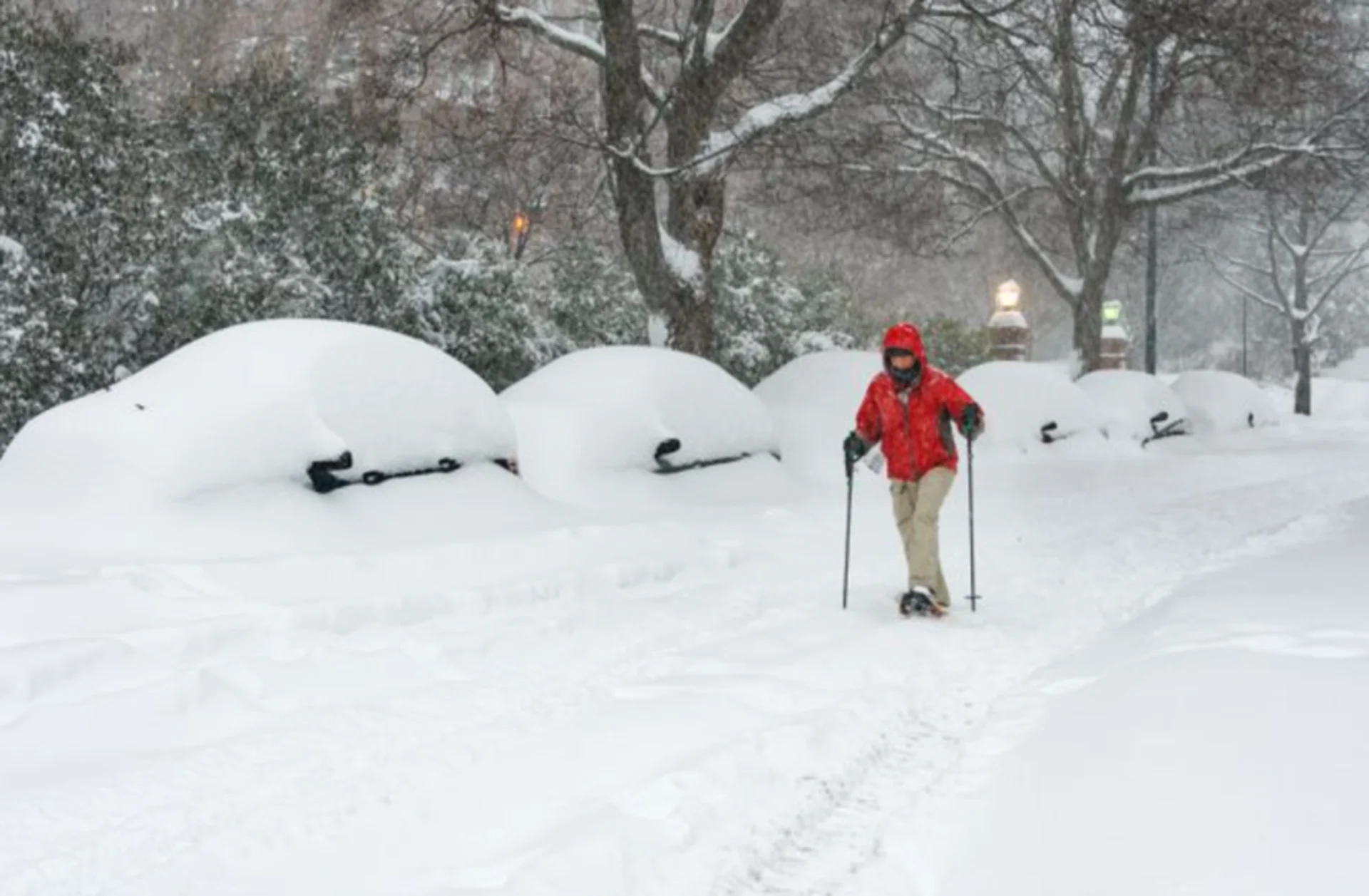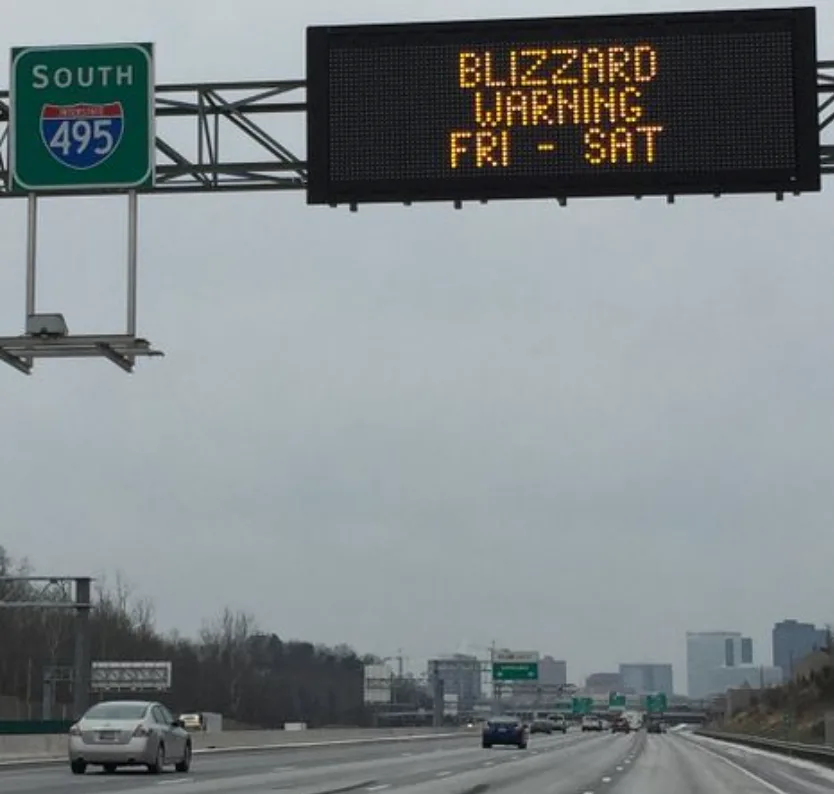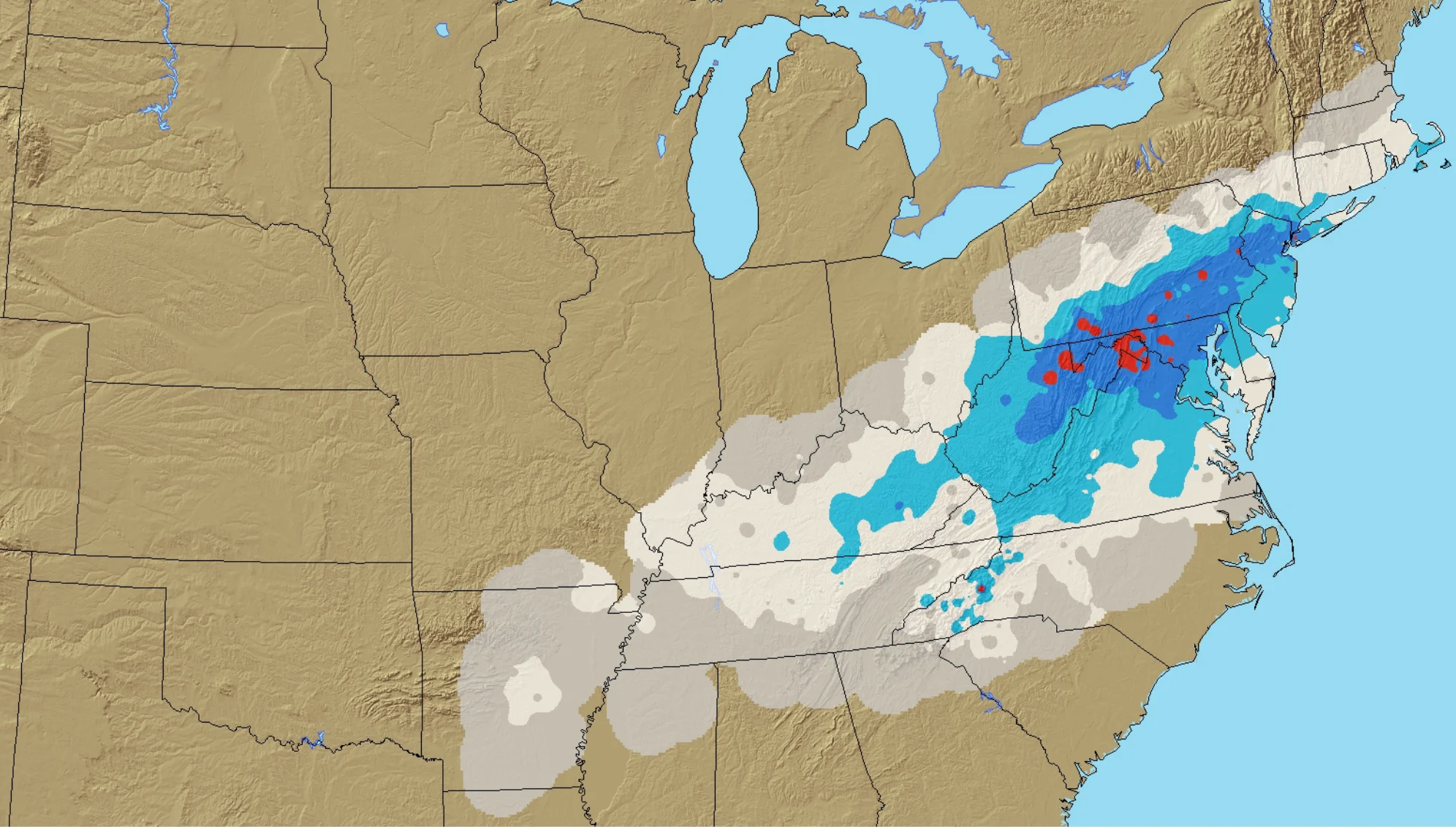
The historical 2016 snowstorm that impacted a third of Americans
Deep snow covered 1,124,054 square kilometres of the U.S., impacting around 102.8 million people.
This Day In Weather History is a daily podcast by Chris Mei from The Weather Network, featuring stories about people, communities and events and how weather impacted them.
--
From Jan. 22-24, 2016, the mid-Atlantic and northeastern regions of the United States were slammed by a snowstorm that threw an 11-state-sized wrench into an average winter weekend.
Forecasters predicted the storm's arrival at least a week before it hit. It started on Jan. 19 as a shortwave trough that came ashore at the Pacific Northwest. The trough gained intensity as it moved through the Great Plains. On Jan. 21, the trough created a weak low-pressure area over Texas.
The developing storm system gained more momentum as it made its way through the Gulf Coast states. On Jan. 22, a new low-pressure system began to develop near the Carolinas as the existing storm tracked over Georgia.
The storm headed north and continued to strengthen aggressively.

Highway signs in Maryland and Virginia displaying warnings of the impending blizzard. Courtesy of Wikipedia/CC BY-SA 3.0
Though the storm was predicted, the impacts were vast.
The snowstorm covered about 1,124,054 square kilometres of the states, impacting around 102.8 million people.
In anticipation of the winter storm, Delaware, Georgia, Kentucky, Maryland, New York, New Jersey, North Carolina, Virginia, Pennsylvania, Tennessee, West Virginia, and Washington, D.C. declared a state of emergency.
A total of 13,000 flights were cancelled. Train services in certain areas were also cancelled, and other public transportation systems.
Sporting events were postponed, including games scheduled by the NFL, NHL, and NBA.
A lot of precautions were taken before the storm arrived. And it arrived.

Courtesy of NOAA
Around 1.5 million people had more than 30 inches (76 cm) of snow and approximately 24 million had more than 20 inches (50 cm).
The conditions caused more than 631,000 people to lose power. The economic losses, measured by loss of sales revenue and wages, were estimated between the broad range of $500 million and $3 billion, depending on the measurement source.
There are 55 deaths associated with this storm, including 12 in Virginia, 9 in Pennsylvania, 6 in New Jersey, 6 in New York, 6 in North Carolina, 4 in South Carolina, 3 in Maryland, and 3 in Washington, D.C.
The Weather Network's Mark Robinson was able to make it to Washington, D.C., before all flights were cancelled. He captured video right in front of the Washington Monument, where the large white structure was barely visible, due to the blizzard conditions.
As seen in the video above, Robinson made it into the thick of the storm, becoming encased in small but powerful snow tornadoes.
To hear more about the 2016 U.S. blizzard, listen to today's episode of "This Day In Weather History." In the meantime, here are some photos that capture the extent of the storm's impacts:
Subscribe to 'This Day in Weather History': Apple Podcasts | Amazon Alexa | Google Assistant | Spotify | Google Podcasts | iHeartRadio | Overcast'
Thumbnail: 2016 blizzard in Cleveland Park, Washington D.C. Coutresy of Alejandro Alvarez/Wikipedia/CC BY-SA 4.0










